As we laid the cable under the river bottom

Hi, Habr. Probably many of you have already seen our previous material on the construction of a base station with a tower on the roof of a building. And today we want to tell a completely different kind of work that we recently had to do. It will be about the conquest of two elements - the earth and, in part, water. Or rather, about how we laid a fiber-optic cable under the river bottom in a section of 980 meters in length.
The task was posed to connect the Vladimir and Nizhny Novgorod region along the Nizhny Novgorod – Murom highway using an additional fiber-optic channel. The problem was that in this place, by ridiculous chance, the Oka River flows. The width of the channel is decent, the depth reaches 6 meters.
Well, we are not used to the difficulties. It was decided to lay the fiber optic cable under the surface of the river bottom. Since this is a common cable for underground / underwater installation, and not a special reinforced one, it was necessary to protect it from external influences. The fact is that the bottom soil is quite mobile, under the action of the flow constantly displace bottom surface masses. And if the cable is not protected, then sooner or later it will break. For the same reason, it is impossible to lay directly on the bottom, it is also fraught with mechanical damage.
')
Site selection
Therefore, this solution is applied: at a depth of several meters, a steel hermetic pipe is laid under the bottom surface, through which a cable is pulled from one bank to another. However, the soil throughout the site may be heterogeneous in composition, primarily in density. So dense rocks can be found that it is impractical or simply impossible to lay a pipe through them. And in order not to face such an obstacle, the bottom is being explored at the proposed site of the gasket. During the week, the bottom relief was examined with the help of divers, and engineering and geological surveys were carried out. As a result of these surveys, a specific section was chosen for laying. Although it must be said that even this measure does not guarantee successful laying the first time. But we were lucky, the river did not prepare surprises and managed to lay a pipe from the first approach.
Gasket
A trench for a cable about 1.5 meters deep was laid on the place where work began on the shore.
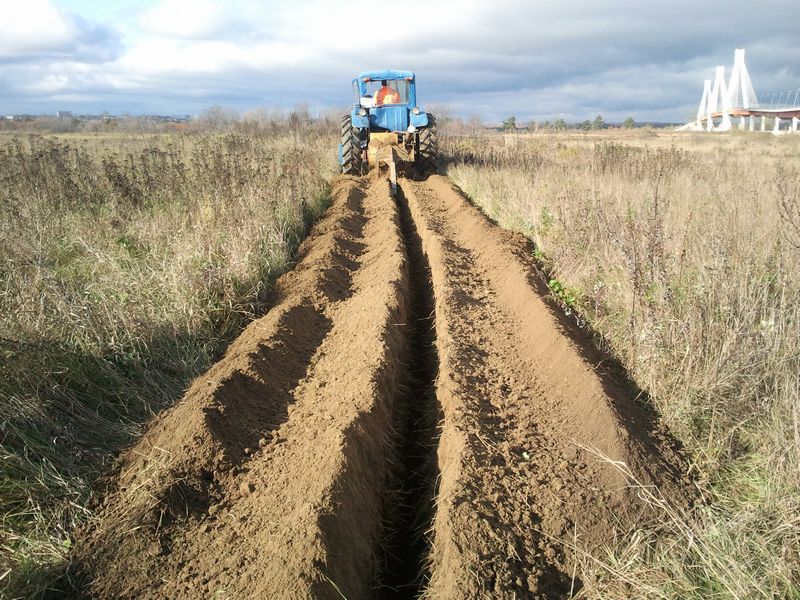
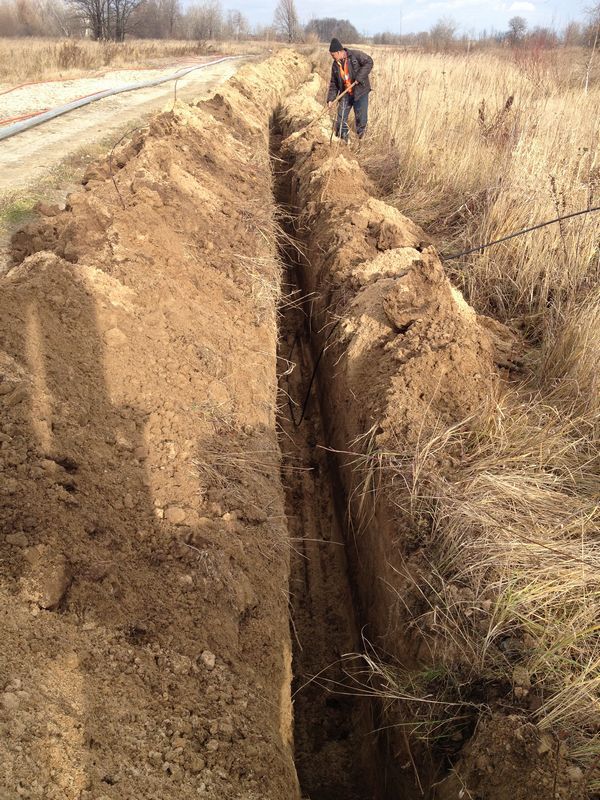
At a distance of about 70 m from the water edge, the FORWARD RX44x160 horizontal directional drilling rig was installed.
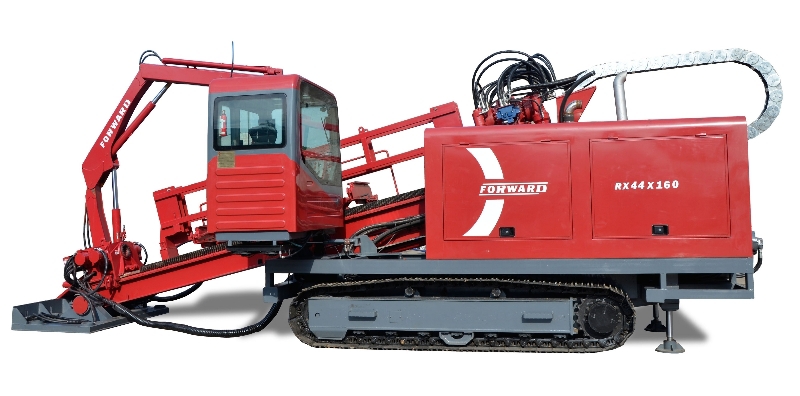
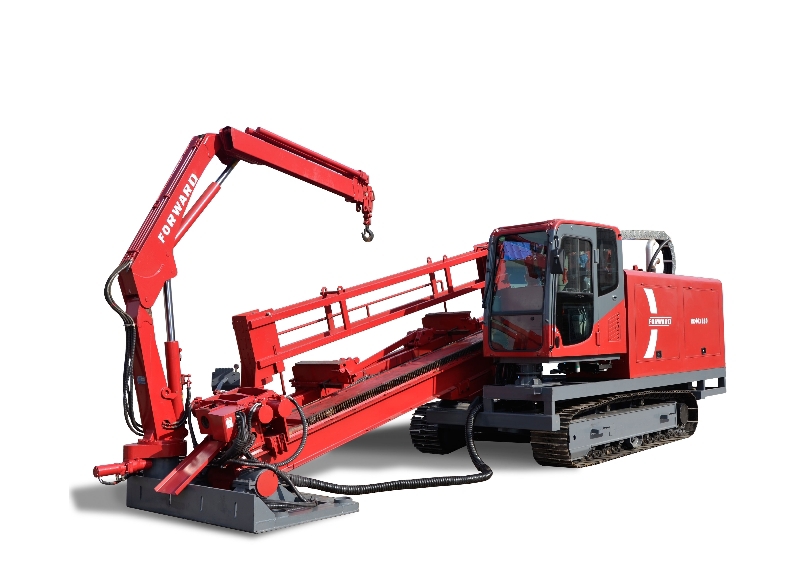

With the help of this installation, the entrance channel was first drilled, and then it was gradually pushed into and pushed a steel pipe 110 mm in diameter and with a wall thickness of 8 mm directly through the ground. It is there that the fiber optic cable will be laid.



Pipe sections are pre-connected to each other on the thread, and the joint is welded to ensure tightness.
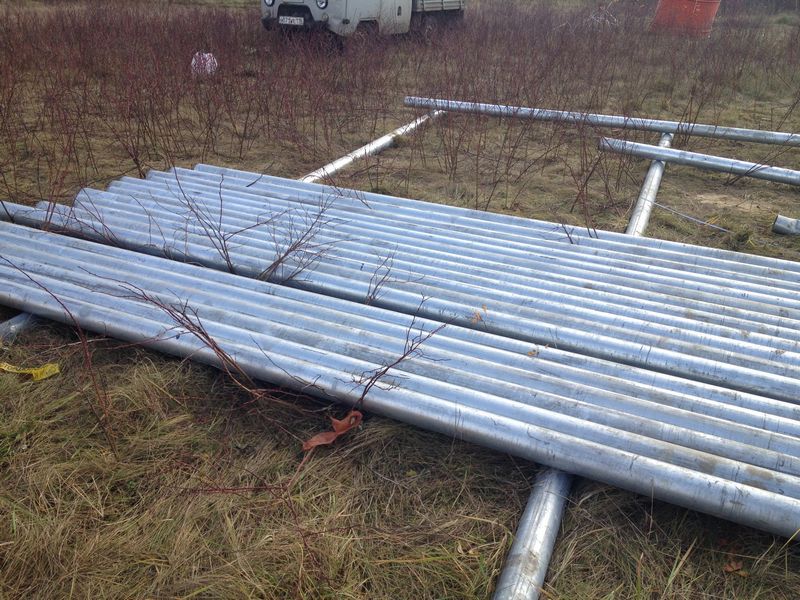


That is why it is so important that the soil of the river bottom was of relatively low density. After all, the drilling rig, which develops a traction force of 44 tons, has to push a rather thin pipe almost 1 km long through the ground! And if a sufficiently dense rock gets in the way of the pipe, the pipe may break, crumple or move to the side. And in such cases, you have to look for a new site and start all over again.
While the drilling rig pushes a pipe under the river, on the other side, a volumetric trench was dug in the place of the intended exit to the surface. A week after the start of the installation, the pipe successfully left the wall of the pit.
Cable extension
The most difficult stage behind. Now you need to stretch the cable through a narrow, hermetic tube of a kilometer length. Of course, just pushing it is impossible. Instead, the end of the cable is attached to a small “wad,” which is inserted into the pipe. After that, using a fiber optic cable blower, a PSI.1 injector, air is forced into the pipe.

The source is the compressor:

Under air pressure - up to 10 MPa - the “wad” began to move through the pipe and pull the cable behind it. That is why the pipe must be sealed, otherwise it simply will not work through it to blow the cable. A few hours later, the “wad” came out on the other bank. Cable stretched under the river!


Conclusion
The total duration of the work, including bottom surveys, was less than two weeks. This section of the communication line was the longest of the rivers laid by us under the bottom of the river. Thanks to him, he managed to close the ring of the fiber optic trunk with a total length of over 750 km, which increased the capacity of the MegaFon network in the two regions.
Source: https://habr.com/ru/post/235347/
All Articles